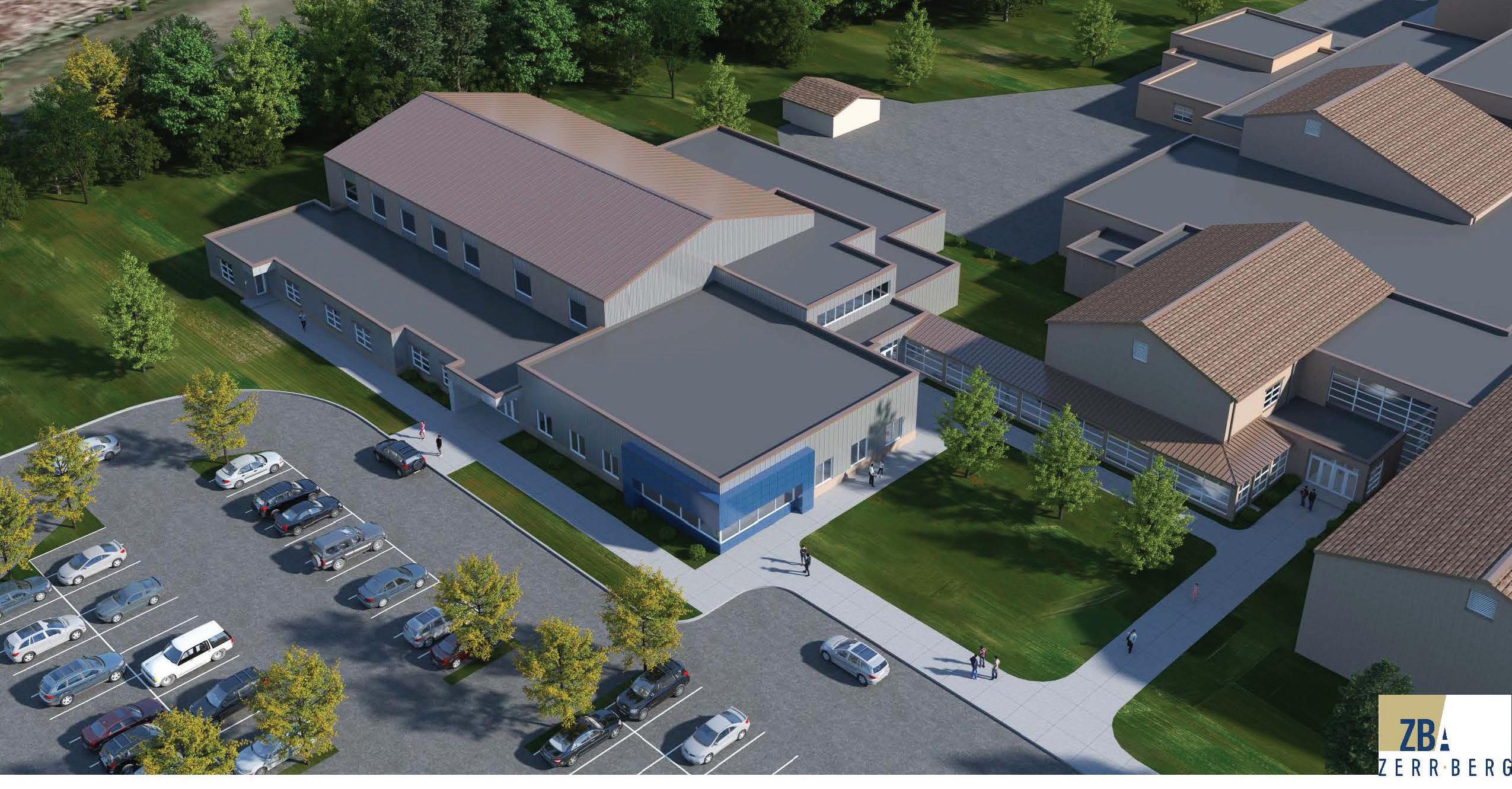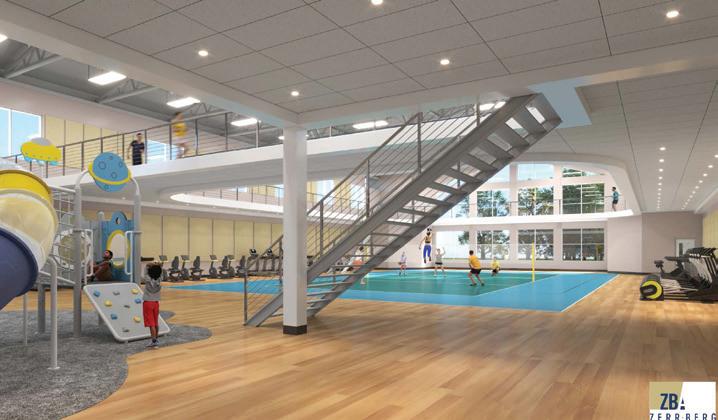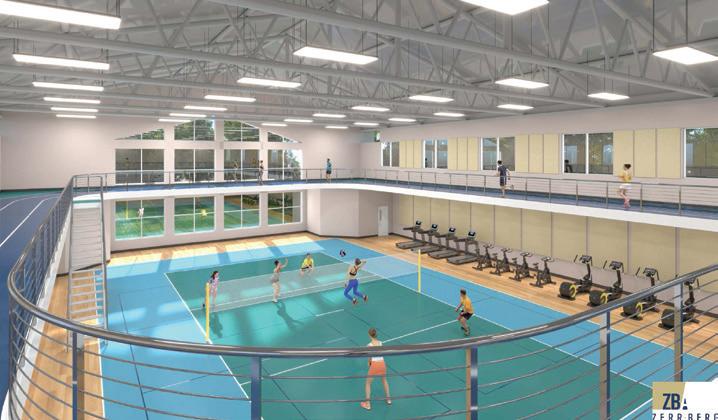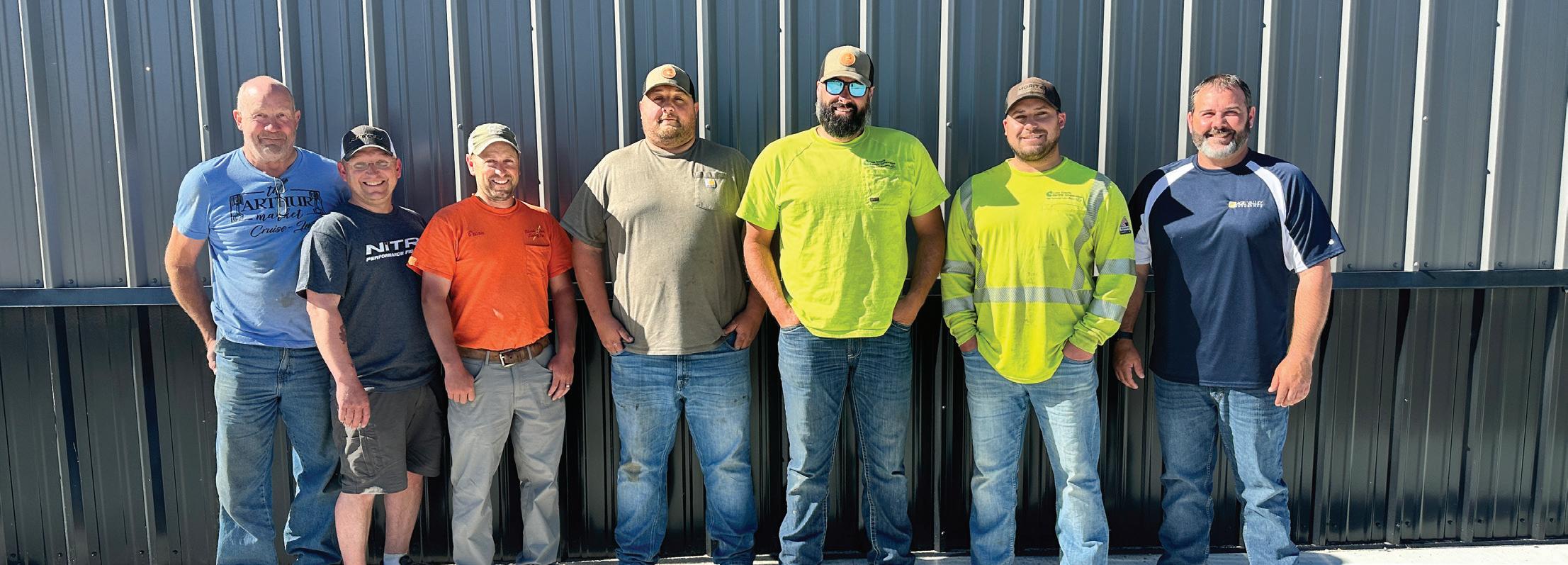HIGHLINE notes August 2024

Learning like never before, page 4
Rooted in history, driven with progress: Arthur, N.D. Meet Director Hoff, page 8


Learning like never before, page 4
Rooted in history, driven with progress: Arthur, N.D. Meet Director Hoff, page 8

Cass County Electric recently completed its annual membershipwide customer satisfaction survey, in which over 300 members were asked to participate. The member responses were sent to the American Customer Satisfaction Index (ACSI®), a company measuring customer satisfaction across several industries nationwide. For 2024, CCEC received an ACSI® score of 89 on a 100-point scale, the highest score in the cooperative’s history. This is a big deal.
CCEC’s score is higher than the publicly measured investorowned and municipal utility scores reported in the syndicated 2024 ACSI® Energy Utility Study. It is 15 points higher than the average investor-owned utility score of 74 and 14 points higher than the municipal utility score of 75.
Now, when I reference the word customer, it is because that is the terminology used by ACSI®. You are not a customer but a memberowner of this cooperative, which means a lot. We use this survey to benchmark our member service, and it lets us know how we are doing relative to our members’ responses. Questions in the
survey relate to our member services, including reliability, communications, friendliness, rate stability, and more.
At this point, I will take time to give credit where credit is due. Our record ACSI® score did not just happen by chance; we didn’t just get lucky this year. This high score is due to our employees’ overwhelming dedication, passion, and hard work, and the direction and leadership of our executive staff and board of directors. We have always been taught to put our members first, which I agree with, but we can’t provide top-shelf member service without taking care of our employees first; then, the rest falls into place.
Finally, as a member-owner, thank you for believing in your cooperative and supporting us at every level. Being engaged by following us on social media, sending us inquiries, taking surveys, and showing up to Member and Annual Meetings pays dividends in how your cooperative is run. The cooperative business model is the best. We are owned and governed by the people we serve. Thank you for being a valued member-owner of Cass County Electric Cooperative.

Summer is the perfect time for a propane tank refill.
The Cass County Electric board of directors met in person on June 25, 2024, and discussed the following topics:
• Moved to approve the June 2024 consent agenda of the regular board meeting consisting of minutes, monthly department reports, director expense report, and the May purchased power adjustment (PPA).
• President/CEO Paul Matthys gave the president’s report providing updates from meetings and conferences attended.
• Received the May 2024 financial report.
• Received annual business accounts update.
• Received a report from the FMWF Chamber of Commerce.
• Received an update on the 20202023 RUS construction work plan and moved to approve the 2024-2027 RUS construction work plan.
• Received an update from the Minnkota Power board meeting.
• Received an update from the Square Butte board meeting.
• Received a report on the CFC Forum.
• Moved to approve the June 2024 capital credit estate payments.
• Reviewed upcoming meetings and events.
The next board meeting is Tuesday, August 27, 2024.
Communications:
Morgan Bachelor
Jocelyn Lura Hovland
David Youngs
Printer: Forum Communications Printing
Board of Directors:
Paul White, secretary
Douglas Anderson
Vanessa Kummer
Stacey Ackerman
Tom Seymour
Glenn Mitzel, board chair
Wendy Loucks
Kalvin Hoff, treasurer
Terry Kraft, vice chair
Executive Staff:
Paul Matthys, President/CEO
Jodi Bullinger, VP of Engineering & Operations
Chad Brousseau, VP of Member & Energy Services
Chad Sapa, VP of Corporate Services & CFO
Tim Sanden, VP of Information Technology & CIO
Highline Notes (USPS 244-740) is published monthly by Cass County Electric Cooperative Inc., 3312 42nd St. S., Suite 200, Fargo, ND 58104. Periodicals postage paid at Fargo, North Dakota 58104, and at additional mailing offices.
Postmaster: Send address changes to Highline Notes 3312 42nd St. S., Suite 200 Fargo, ND 58104 © Copyright Cass County Electric Cooperative 2024. All rights reserved.

about the cooperative, articles of incorporation, bylaws and more

Drive past Northern Cass School, and you’ll be met with amber waves of grain and corn fields that rival a scene out of Field of Dreams.
“We’re a district located in the middle of a cornfield,” Superintendent Dr. Cory Stiner said. “Even though we don’t have a community that sits here (on the grounds near the school), we’re full of community.”
That community consists of students from the towns of Arthur, Argusville, Erie, Gardner, Grandin, and Hunter, in addition to 35% of the student body that lives outside the district’s six communities.
“They (people who live outside the district) do that because we provide big school opportunities but do it in a small school environment,” Steiner added. “People at Northern Cass know parents, grandparents, siblings, and are connected to a really passionate
group of educators.”
Northern Cass is no stranger to a strong reputation; recognized as one of the most innovative districts in the nation, the district practices a personalized competency-based system that meets students from all walks of life where they are.
“When kids come into our system, they’re not going to fail because they’re behind; they’re going to be right where they need to be, and we’re going to work to help them grow,” Steiner said. “We’re in year six of that transformation and the only one in the state to do so.”
Yet Northern Cass’s forward-thinking approach to education is just the tip of the iceberg. The district’s most recent development? A health and wellness center that provides a holistic approach to succeeding in the classroom and all aspects of life.
More than books
What started as an idea postCOVID in 2022 took flight after a conversation with Essentia Health, which provides athletic training services for Northern Cass.
“We called them in, and they said, ‘You guys must want turf (given the recent trend of its popularity among schools),’” Steiner recalled. “We said, ‘Actually, no, we’d like to think differently.’ They challenged us to think bigger and more holistically about how we can serve the people of our community, not just the people in our building.”
That sparked a conversation with Northern Cass Site Manager Amber Lockhart on how the district could become a full-service community school.
“Any service a kid needs, we want to have it on site instead of our students having to drive a distance to Fargo,” Lockhart said. “There’s
nothing wrong with that, but for some of our folks, that could be a half day off, whether that’s mental health, dental, etc.”
The next step? Community input and an executive committee, on which Lockhart sits and Steiner serves as liaison.
“We thought, if we’re going to do a clinic, what are other things that our community would need?” Steiner said. “That led to listening sessions and an evolved list of the things we want to offer.”
The list is extensive yet impressive for a facility unprecedented in rural America. From medical, dental, and vision care to behavioral health, healthcare training, and a food pantry, the facility checks all boxes for physical, mental, and social wellbeing.
While fulfilling the needs of students is at the forefront of the project, community members and staff will also benefit. Perhaps one of the most impactful ways will be through childcare services offered to the community and staff members.
“A huge part of my role is attracting and retaining talented staff and teachers,” Steiner said. “When we put out an application and say we have on-site daycare, I think that will really bolster our application pool.”
While Northern Cass features all the traditional classroom elements, the district prides itself on providing
modern experiential learning. The health and wellness center will only further that.
“There will be opportunities for students interested in early education to work in our childcare center, opportunities for students interested in dentistry in the dental office, and an internship through the food pantry,” Steiner said. “Our kids can and should get credit for things they do outside of the classroom because learning is everywhere.”
Steiner believes the opportunity for students to work at the facility will not only provide lived learning experiences but perhaps inspire the next generation to pursue careers they otherwise wouldn’t.
“I can see a scenario where we see more kids go into education because of their experiences with the facility, which is huge; we need that,” he said. “I can also see experiences where a student may be more inclined to say ‘Hey, I want to run my own business or childcare center’ because they’ll get a firsthand look at what it’s like.”
Like any major project, the Northern Cass Community Health and Wellness Center has sparked great conversation within the communities that the district serves. And while the majority of community reception has been positive and supportive, Steiner welcomes questions and skepticism.
“I like when people say it can’t be


done and love to show people that with creativity and the right people, things can be done,” he said. “Our world needs that more now than ever.”
Example A of this came when navigating the obstacles of obtaining dental services for the facility. Deemed perhaps the most difficult amenity to obtain full-time, a donor connected the district with an interested provider in the region. Conversations later, the paperwork was signed.
“It’s been special to see,” Steiner said. “And when people say, ‘I’m not for the project,’ I say, “You don’t have to apologize for that. Let’s sit down and talk about the logistics because I’d love to gather feedback.’”
In the fundraising stage, the project is slated to begin construction in the fall of 2025 or the spring of 2026 at the latest. Steiner, Lockhart, and their team have been meeting with architects to finalize building blueprints and plans. The project will not increase taxes for community members and is completely donorfunded.
As he reflects, Steiner hopes and believes the facility will impact lives long after his time at Northern Cass.
“This project will help people of all ages thrive, not just survive in small towns,” Steiner said. “This is a generational project.”
Renderings provided by Zerr Berg Architects.


August 10 October 5
“Thirty-plus lots, a splash pond, and park space where families can enjoy themselves while still being able to get into town.”
Looking out the north windows of Cass County Electric Cooperative’s Arthur, N.D. shop, Scott Kroeger points toward the soon-to-be Pearson Pond development of town.
“They’ve started with infrastructure,” said Kroeger, who has seen every angle of leadership in the Cass County town. “Just north is the Smoking Tree development. That started 20 years ago and is full now.”
Arthur is a beautiful blend of modern-day growth rooted in a town with rich history. With a population hovering just north of 300, Arthur is nestled on State Highway 18, 35 minutes northwest of the FargoMoorhead metro; close enough for commuters yet far enough to establish its own identity and character.
Kroeger came to the community for work in 1980 and hasn’t left. And while work and the world-class
charm of Kelly’s Café on the town’s main drag have certainly been positives in his 44-year-and-counting stay, it’s the town’s history, sense of community, and people that have kept him.
A town of firsts
While a student at NDSCS, Arthur first came on Kroeger’s radar when an accounting job opened at the local grain elevator. Planning on moving to Bismarck with his friends after graduation, he decided to apply for experience but didn’t seriously consider the opportunity.
The future had other plans.
“Somehow, they offered me the job, and I took it,” he said. “I’ve been here since.”
In his 44 years as a resident, Kroeger has served on the Arthur Park Board and city council, as the town’s mayor and city auditor, and as a member of the volunteer fire department, a role he holds to this day.
“Becoming an officer in the fire department was my first elected role
in town,” Kroeger recalled. “About a month into working at the grain elevator the current fire chief (who also worked at the elevator) came up to me and said, ‘You’re joining the fire department.’ Sure enough, I was elected at the next meeting.”
“Scott’s story is what this community is all about,” Arthur Fire president and CCEC journeyman lineworker Joey Strauss said. “People find ways to step up and wear multiple hats to support the community.”
The elevator that brought Kroeger to town is now known as Arthur Companies and serves as the backbone of the community, operating grain and agronomy businesses across the state and in Idaho. As the town’s largest employer, the elevator is a can’t miss as one enters town and holds a breadth of history.
“We were the first retail bulk fertilizer business in North Dakota and the state’s first anhydrous plant,” Kroeger said. “We were the first to ship a shuttle train of sunflower seeds to Mexico and get our cars back.”
The firsts don’t stop there. The Good Samaritan Society, one of the nation’s leaders in senior care, was founded in Arthur in 1923.
Thinking forward
While history runs deep, drive through Arthur and you’ll be pleased by both traditional infrastructure that has been well kept alongside newer developments that embody the community’s growth.
“In the early ‘80s, the fathers of the town decided that we had too many old buildings,” Kroeger said. “Some of the old buildings went away, and the Arthur Mall became the hub of retail in town.”
Years later, the mall stands strong, with people flocking from miles away to enjoy Kelly’s Café alongside the Arthur Bar (formerly Coaches Corner) and Mary’s Quilt Market.
“Our leaders are forward thinking and encourage development and people to be a part of the community,” Kroeger said. “Even with the new housing development, the person leading it is a member of an original Arthur family.”
Arthur’s residential makeup mirrors that of its history, tradition, and new alike.
“The diversity of generations is great,” Arthur Community Coordinator Jeremy Nelson says. “We’ve got family names that have been here for a long time and others that are newer. It’s cool to look and say, ‘Oh my gosh, they’ve been here for four or five generations.’”

Nelson’s family falls in the latter category. A teacher in FargoMoorhead, he and his wife planted roots in Arthur in 2017 when their family grew from two kids to four. Similar to Kroeger, Nelson didn’t anticipate the move, yet couldn’t be happier.
“We weren’t necessarily looking to move to a small town at the time but found our place in Arthur,” he said. “We’ve got great neighbors, and people look out for each other.”
That became evident for Nelson early in the thick of winter.
“Our neighbors have a tractor with a plow, and they’ll just go up and down the street plowing our snow. There was one time when my daughter got stuck in the snow on the way to school, and the city manager happened to be driving by and helped get her car out,” he said. “It’s the little stuff that goes a long way.”
Like Kroeger, Nelson has served the community in various fashions. Now in year four as community coordinator and coming off a six-year tenure on the park board, Nelson’s passion project spawned in 2020 and has continued to unite the community and beyond: The Arthur Market.
What started as an idea from his wife has turned into an event that brings Arthur residents and others from across the state of all ages together for three Saturdays each summer/fall at the Arthur City Park.
“When I started as community

coordinator, my wife looked at me and said, ‘I think you need to put together a farmer’s market,’” he recalled. “Our first market in 2020 had 15 vendors and nine sponsors and now we have 42 vendors, 27 sponsors, and our largest attendance for a kickoff event yet. Watching the growth has been phenomenal.”
Nelson is intentional about each market. He ensures that there are activities for children, mindful that water slides are a must on hot days, so parents can supervise yet have the freedom to explore and converse. A firm believer in supporting small businesses, he’s kept local vendors and farmsteads at the forefront of the market.
“We find what works, we keep it, and always ask ourselves what we can add,” Nelson said. “We try to grow with purpose and not just grow.”
“The Arthur Market has energized community members to get out and about,” Kroeger added. “Between that, Arthur’s Barn (which has been hosting dances and events since the 1950s), and our small businesses, we’ve got a lot of great things going on.”
As Kroeger reflects on the past and envisions Arthur’s future in five or 10 years, he invites growth and progress with confidence that the town’s roots of fostering high-quality people will remain true.
“Just a happier and as-friendly version as it is today.”
Photos provided by Cori Jensen.


Back in 2018, Cass County Electric Cooperative (CCEC) board director (and current chair) Glenn Mitzel reached out to Kalvin Hoff about an opening on the board following a retirement.
A husband and father, electrical engineer, business owner, and avid curler, Hoff scratched his head at how he could make time.
“I was always familiar with CCEC and have been on the system since I bought my first home out of school,” Hoff said. “Yet initially, I thought, how can I logistically fit this in?”
Six years later, Hoff is amidst his second term on CCEC’s board of directors and couldn’t be happier.
“It’s a transformative time in our industry, and I’m honored to have a seat at the table,” said Hoff, who serves as the board’s treasurer.
Hoff, a native of Richardton, N.D., grew up on the farm and became acclimated to the cooperative world through interactions with lineworkers during outages.
“We were at the end of the bus route and end of the power line,” Hoff recalled. “Any storm, we’d be out (of power) for a day or two. My dad would hook the generator up and run the tractor to power the farm.”
Graduating in a class of 39 students, Hoff competed in sports yearround. Yet his true talents shined in the classroom.
“I was more of a mathlete than an athlete,” he joked.
Hoff’s smarts led him to NDSU, where he earned a degree in Electrical and Electronics Engineering. After stretches as an engineer at nationally recognized tech companies, Hoff founded Amber Waves Integration, where he serves as a senior controls engineer. In his role, he designs control panels and consults with clients to best suit their automation needs.
When he’s not working or engaging in board activities, Hoff can be found on the ice ... not playing hockey, but curling.
“I married into a curling family and have been pretty active with it ever since I’ve known my wife,” Hoff said.
The best part for him? Coaching his 12-year-old son.
“It’s been awesome. One of the cool things about youth curling is that when a kid is out there, it’s just him and his teammates,” Hoff said. “I’m not allowed to coach from behind the glass, so it allows them to develop problem-solving skills.”
In addition to serving on the board, Hoff also represents CCEC on Minnkota Power Cooperative’s board and the Mid-West Electric Consumers Association board. As he considers the opportunities and challenges ahead, he’s confident that CCEC’s board and team are equipped to meet them head on.
“The diversity of perspectives on our board and the experience of CCEC’s leaders and team members gives me confidence as we continue to grow,” Hoff said. “They’re confident in what they do, and they should be.”

When it comes to maintaining a comfortable home environment, the choice between an air-source heat pump and a traditional air conditioner (AC) is significant. While both devices serve the essential function of cooling your home, the air-source heat pump offers several advantages that make it a superior option. Investing in an air-source heat pump can be an efficient, cost-effective, and environmentally friendly decision.
One of the most significant advantages of an air-source heat pump is its ability to function as both a heating and cooling system. Unlike a traditional air conditioner, which only cools the air, a heat pump can reverse its operation to provide heating during colder months. This dual functionality means homeowners can take advantage of a heat pump for yearround climate control, simplifying maintenance and potentially reducing overall costs – especially when paired with our off-peak program.
Air-source heat pumps are renowned for their energy efficiency. They operate by transferring heat rather than generating it, which
requires less energy compared to the electrical resistance heating or combustion processes used by traditional heating systems. During the summer, a heat pump works similarly to an air conditioner by extracting heat from the indoor air and expelling it outside. In winter, this process is reversed, drawing heat from the outdoor air and bringing it inside. Even in colder climates, modern heat pumps can efficiently extract heat from the air, thanks to advancements in technology.
This efficiency translates to lower energy bills. According to the U.S. Department of Energy, an air-source heat pump can reduce electricity use for heating by approximately 50% compared to electric resistance heating such as furnaces and baseboard heaters. Additionally, the efficiency of cooling provided by heat pumps is on par with that of high-efficiency air conditioners.
Reducing energy consumption also means reducing environmental impact. Air-source heat pumps are more environmentally friendly because they use less electricity. This reduction in energy usage results in fewer greenhouse gas emissions, making heat pumps a
greener choice. Furthermore, many heat pumps utilize eco-friendly refrigerants, which have a lower global warming potential (GWP) compared to those used in older AC units.
While the initial cost of an air-source heat pump can be higher than that of a conventional air conditioner, the long-term savings make it a worthwhile investment. Reduced energy consumption leads to lower utility bills over time. Additionally, there may be incentives, rebates, or tax credits for installing energyefficient systems like heat pumps, which can offset the initial installation costs.
While both air-source heat pumps and air conditioners can cool your home effectively, the heat pump’s ability to also provide heating, coupled with its superior energy efficiency, environmental benefits, and long-term cost savings, make it a great option. As technology continues to advance, the benefits of heat pumps will only become more pronounced, solidifying their place as the preferred solution for modern, energy-conscious households.
Cass County Electric Cooperative (CCEC) is excited to announce its partnership with the Rural Development Finance Corporation (RDFC) to distribute $3,000 in grants to support community-owned entities, nonprofits, and community-based projects. This initiative aims to promote economic diversification and community vitality by providing funding for sustainable asset building.
RDFC, a North Dakota nonprofit finance and development corporation, is owned by 16 North Dakota rural electric cooperatives, nine rural telecommunication cooperatives, and the North Dakota Association of Rural Electric Cooperatives. Funding for RDFC programs comes from fee income generated by Dakotas America LLC, a development entity providing New Market Tax Credits in the Dakotas.
As an RDFC member, CCEC awarded $3,000 in grant money to eligible organizations within its service territory. These funds are made available yearly to encourage organizations to apply for RDFC’s more extensive loan program, which offers low-interest loans for communitybased projects and nonprofit entities.
This year, RDFC awarded Community of Care
$1,000 to support Faith Community Nurse (FCN) programming, assisting older adults who wish to remain in their rural Cass County homes. The grant will fund three part-time FCNs who provide essential medical outreach care.
The Arthur Rural Fire Protection District also received $1,000 to complete its new fire hall. This grant will help finish the floors, kitchenette/meeting room, hallway, and bathrooms.
Lastly, Arthur Market LLC was granted $1,000 to support the 2024 farmers/makers markets operations. The funds will cover expenses for live music and family-friendly activities, such as a petting zoo and bouncy water slides.
“Grants through the Rural Development Finance Corporation help support our rural communities and improve the quality of life for our members. Cass County Electric is committed to the communities we serve and proud to be an RDFC member,” said VP of Member and Energy Services, Chad Brousseau.
For more information about the grants, visit CassCountyElectric.com/RDFC-grant.



The goals of this program are to:
• Assist local development organizations.
• Assist political subdivisions in leveraging additional capital to finance business and community economic development activities.
• Provide microloans, establishing or enhancing revolving loans.
• Provide community loans for residential property or industrial park development, infrastructure, and projects involving essential services.
• Provide other uses considered on a case-by-case basis. RDFC funds must be matched dollar for dollar and be repaid in 10 years or less.
The purpose of this loan fund is to expand lending capacity to primary sector businesses and the expansion of start-up retail and service-based businesses. The funds can be used for structural improvements, equipment, and expenditures that will enhance the overall image of the business and commercial districts in rural communities.
This program partners with the Bank of North Dakota (BND) and follows BND’s guidelines for its interest buydown incentive programs, PACE and Flex PACE. The funds help rural communities leverage interest buydowns for eligible projects, including structural improvements, equipment purchases, and expenditures to enhance business images or commercial districts. Loans focus on projects that create or retain jobs, introduce new products or services, and construct, renovate, or expand rural businesses.


Almost every home is filled with valuable electronics like kitchen appliances, televisions, computers, and gaming systems. While we often invest considerable time and money into purchasing these products, it is equally important to invest in their protection against surge damage.
A power surge is a rapid spike in voltage that can harm sensitive electronic equipment. Such surges can be triggered by lightning strikes or by damage to power lines and utility poles, often caused by falling branches or car accidents. Surges can enter a home through multiple points, including phone and cable wires.
“Power surges can come from many sources. No matter where they originate, surges pose a significant risk to electronics and can lead to costly damage,” said Chris Erickson, manager of technical services at Cass County Electric Cooperative.
Without proper protection, some electronics can be instantly destroyed by surges, while others may suffer gradual damage
that reduces their lifespan and functionality. This damage might not be immediately apparent, but over time, it can lead to equipment failure.
One effective way to protect your home is to install a surge protector in the circuit breaker panel. These protectors limit the voltage to electric devices and block unwanted electrical surges. A qualified electrician should install a surge protector.
Another preventive measure is to use power strips or smart strips with built-in surge protectors. These devices safeguard whatever is plugged into them and can be found at your local hardware store.
It’s crucial to understand that not all power strips have built-in surge protection. Power strips are designed to split an outlet into multiple ports, whereas surge protectors defend electronics against surges and electrical noise. When choosing a device, look for terms like surge protection, fused strip, or interrupter switch.
Additionally, surge protection options are available in the form of wall outlets. These devices can be plugged directly into wall outlets, saving space and reducing cord clutter. They often feature multiple outlets on their face, protecting all connected electronics from power surges.
Whether opting for a power strip or a wall outlet surge protector, it’s important to consider the clamping voltage, which is the voltage that the surge protector will allow through to your equipment before diverting it to the ground. A lower clamping voltage is preferable. Also, choose a surge protector with indicator lights to ensure it is functioning correctly.
“Investing in surge protection can be very cost-effective in the long run,” Erickson adds. “The expense of surge protection is minor compared to the cost of replacing damaged electronics.”
For more information on electrical safety, visit CassCountyElectric.com.
Check out our Pinterest page for more recipes!

Zucchini bread
Ingredients:
2 cups zucchini
2 cups sugar
1 teaspoon vanilla
2 ½ cups flour
1 teaspoon baking powder
¾ teaspoon nutmeg
1 cup oil
3 eggs
1 teaspoon salt
2 teaspoon soda
2 teaspoon cinnamon
½ cup walnuts (optional)
Preparation:

As the sun shines and gardens burst with fresh produce, summer is the perfect time to enjoy vibrant and refreshing dishes made from homegrown ingredients. Dive into our collection of summer garden recipes that celebrate the season’s bounty, bringing the flavors of your garden straight to your table.
Rhubarb cake
Ingredients:
1 package yellow pudding-in-the-mix cake mix
3 cups raw rhubarb finely chopped (can use raspberries instead)
1 cup sugar
2 cups heavy cream
Sift dry ingredients. Add in the remaining ingredients. Mix. Bake for 1 hour at 350 °F.
Pumpkin bread
Ingredients:
1 ½ cups sugar
1 teaspoon soda
¼ teaspoon baking powder
¾ teaspoon salt
¼ teaspoon cloves
½ teaspoon cinnamon
½ teaspoon nutmeg
1 ⅔ cups flour
½ cup salad oil
2 eggs
1 cup pumpkin
½ cup water
Preparation:
Sift dry ingredients. Make an indentation and add all the remaining ingredients. Mix. Stir in ½ cup nuts if desired. Bake 1 ½ hours at 325 °F.
Preparation: Mix cake according to directions. Pour into an ungreased 9 x 13 pan. Toss rhubarb and sugar together and stir well. Spoon the mixture evenly over the cake. Pour heavy cream over the top. Bake for 1 hour at 350 °F; cool for one hour before serving. Serve upside down with whipped cream. Store in refrigerator.
Strawberry pie
Ingredients:
1 small pkg. cook & serve vanilla pudding mix
1 small pkg. strawberry gelatin
1 ½ cup Mountain Dew soda
3 cups sliced fresh strawberries, washed and dried
1 (6 oz.) prepared graham cracker crust
Whipped topping
Preparation:
Mix pudding, gelatin, and Mountain Dew in a saucepan. Bring to a boil, stirring with a whisk. Cook for two minutes. Cool. Fold in sliced strawberries. Pour into graham cracker crust. Chill. Serve with whipped topping.
Cass County Electric Cooperative, with CoBank’s support, provides $18,000 annually in scholarships through North Dakota Dollars for Scholars and the West Fargo Area Scholarship Fund. Congratulations to this year’s recipients!



















For information regarding scholarships, please reach out to the student’s school chapter of Dollars for Scholars.
All ads must be 40 words or fewer and will be abbreviated following our guidelines. No real estate or commercial ads will be accepted. Ads are published for members at no charge as space permits on a first-received, first-printed basis. Ads are due by the 10th of the month prior to publication. Members may submit only one ad per issue. Editor reserves the right to edit or reject any ad. Email ads to: ccec@kwh.com
Cast iron 6-piece set never used. 10’ skillet chicken fryer Dutch oven 8’ skillet, $100. Sea Eagle Raft wood floor, $200. 2 Man Dr. Woodchipper 10 Hp. like new, $1,500. 701-238-9549
5-shelf Curio. Dining table w/ 6 chairs. Blanket chest. Two 3-drawer nightstands. Bed. 5-drawer chest. 6-drawer dresser w/ mirror. 701-3652496
1994 Cadillac Seville SLS, 4-speed auto transmission, dark cherry w/ saddle color top, 135,600 mi, mint cond., $4,500. 218-850-3198
Dixon Zero turn mower, 16 HP index motor, SpeedZTR 42” cut, new battery, $500. 701-840-1094
Spode Christmas China, 10 place settings of dinner plates, salad plates, glasses, coffee cups, wine glasses, & many extra pieces, $500. 701-367-9168
Cajun Injector Elect. Smoker, popup digital display, side chute to prevent opening door when adding wood chips/ pellets, comes w/ nylon cover, good shape, 17” W x 6” L x 32” H, $60/OBO. 701-526-4205
Floor mats for Toyota Corolla, new, never used: Set of 4 black carpeted, $25. Set of 2 front black carpeted, $15. Set of front tan carpeted, $15. 701-200-6028
Vintage cream separator, Delaval S17 w/ some accessories, $300, Vintage WeeCraft Christmas Village pcs., many styles/varieties, $5/ea. 701-293-0805
GE 4.4 cu. ft. refrigerator, $40. 8-ton hydraulic jack. 50 ft. air hose. Carpet bond iron. Carpet seaming tool. Carpet
cutter. Carpet kicker. HVLP prof. paint spray gun. 100K BTU weed burner torch kit. 50 ft. drainpipe cleaning cable. Sears hedge trimmer. 14 gal. Agri-Fab sprayer tank. 5 gal. gas cans (2). 701-367-0115
New Gander Mountain duffle bag, StaRite submersible well pump ½ HP 155 volt, $75/OBO. Air flow style tailgate fits pickup 2017-19, $175. Mailbox w/ post, $25. Text for photos. 701-371-8111
Small square bales of horse-quality grass hay & wheat straw. 701-238-2933
Antique lantern, $300. Arlo security systems (2), $200/ea. Denon receiver, Torque audio speakers, & center channel, $500. 701-715-5748
Vrienden 10’ x 10’ offset patio umbrella w/ rotating base & LED light. Original canopy (taupe) is in exc. cond. Incl. a spare canopy, extra Veranda cover, 4 –18” concrete blocks for the base, $650. 701-880-1721
DELFT porcelain, 4 pieces (vinegar jar, salt & pepper, & bell), not a set. Jar signed, all marked from Holland. Pics avail., $50. 701-977-0362
Model “59” Woods Belly mower, all there but drive belt. 701-437-3259
1979 Allis Chalmers lawn tractor, 9.14 shuttle mower & snowblower attachment, all original cond., $1500/all. 701-412-6606
Vrienden 10’ x 10’ offset patio umbrella w/ rotating base & LED light, original canopy (taupe) in excellent condition plus spare canopy, extra Veranda cover & 4-18” concrete blocks for base are included, $650. 701-880-1721



